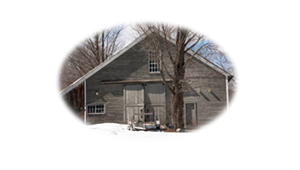SHEDS
Bauhan Publishing
Howard Mansfield, Joanna Eldredge Morrissey (Photographer)
The title of Howard Mansfield’s panoramic book “Sheds” holds far more persuasive power than its simple five-letter title. And Joanna Eldredge Morrissey’s supporting photographs are mesmerizing.
His sheds range from maple sugarhouses to meetinghouses. Her camera catches covered bridges to farmhouse connectors. Never a dull moment in this full-color compendium of surprises.
Part of the attraction comes from Henry James’ book design of many full-book photo spreads edited onto coated glossy pages. No e-book version could compare.
— Steve Sherman, The Keene Sentinel
Superbly illustrated throughout, Sheds is an extraordinary and unique study that is as impressively well written as it is exceptionally well organized and presented. Simply stated, Sheds is unreservedly recommended for both community and academic library collections, and will prove to be of special interest to students of architecture as well as non-specialist general readers with an interest in the variety and utility of these relatively simple structures.
— The Midwest Book Review
It was too hot to do anything more taxing than turn a page last night. So I read. Howard Mansfield is one of my favorite writers, and his latest book, Sheds is a kind of visual companion to the previous one, Dwelling in Possibility: Searching for the Soul of Shelter. Joanna Eldredge Morrissey, the staff photographer at the MacDowell Colony, a famous artists retreat in southern New Hampshire, took the photos of all kinds of sheds — from covered bridges and meeting houses to work sheds.
This is a beautiful book to spend an hour with, but I highly recommend you also read Dwelling in Possibility. Mansfield is an excellent writer. In Sheds he provides just a taste of his philosophy of the soul of shelter: “Sheds are utilitarian. Sheds contain small things — wood and tools — and big: summers, winters, solitude, festivity. The smallest sheds can be liberating: a bob house on a frozen lake, a summer cabin. The can shelter dreams.” And this passage, on why people seek out covered bridges. Yes, partly for nostalgia, “But the strongest appeal of covered bridges, I think, lies in the surprising feeling of shelter they arouse in people. Passing into the bridge’s shadows, a traveler is enclosed and suspended, and in many bridges, open to the water — looking through the trusses or windows, or down through the boards of the roadway. This sudden enclosure and suspension reawakens the senses.”
We recently walked on the bridge in Littleton, and it’s very true. Mansfield has a way of writing that evokes a sense of recognition in readers; you read his books and continually think, “yes, that’s it exactly,” even though previously you weren’t really conscious of thinking whatever his words has awakened in your mind.
Sheds and Dwelling in Possibility would make a great gift, for yourself or someone else. Don’t miss either.
— Deb Baker, Bookconscious
Sheds are simple constructions upon which the author has built complex meditations. Howard Mansfield, historian-preservationist-philosopher, has expanded a chapter of his Dwelling in Possibility: Searching for the Soul of Shelter (2013) into a pictorial survey of a familiar sight in New England, the boxy add-ons to the built environment that provide spaces for particular functions, or a series of functions. The materials, sizes, and purposes of sheds vary, but their qualities of flexibility, adaptability, and agelessness are the same.
Mansfield lets his exploration of ideas wander over the varieties: meeting houses, connected farm buildings, covered bridges, summer cabins, bob houses (known elsewhere as ice fishing shacks), sugar houses, even A-frames. He mentions “anti-sheds” (abandoned and falling down by stages), and re-purposed “war sheds” (Quonset huts). He explains why bridges became covered, and plain meeting houses morphed into churches with spires. He recalls that the competition of Midwestern farmers prompted New Englanders to spruce up their outbuildings and make them more efficient by attaching them to one another. He describes how lakeside structures often are either floated or drawn over ice to serve another purpose on the opposite shore.
The author has gone beyond standard research to harvest comments of architects and local builders. He has probed for meanings and feelings about these shelters… Morrissey’s photographs are of high quality. At first I noticed repetition, but gradually I realized the slightly altered perspectives added to my arm-chair experience of being in the landscape.
— Karen Dahood, Bookpleasures.com
Sheds will appeal to readers who like the coffee table style of book, as well as to those wanting a dose of history and philosophy to expand the illustrations. The balance of photos and text is just right, neither one overpowering the other.
— Englewood Review of Books
Howard Mansfield is a wry and perceptive commentator on the built fabric of New England…. Sheds is a fun and informative romp through structures that were not designed to be looked at.
— William Morgan, Design New England
A 2016 Forward Reviews Book Awards finalist in the photography category.

